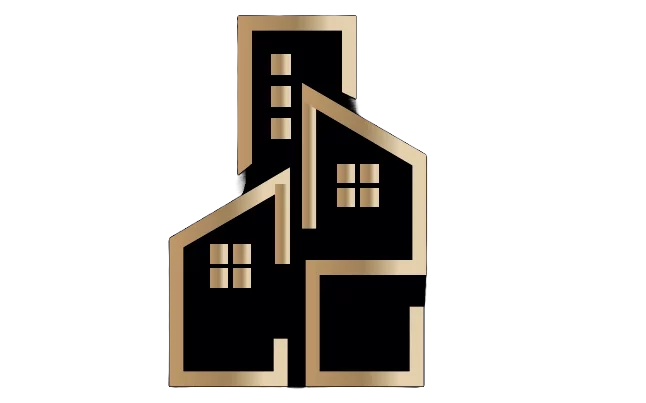The Future of Construction: Trends Shaping the Industry
Introduction
The construction industry is undergoing a massive transformation, driven by technological advancements, sustainability demands, and innovative building practices. From smart homes to energy-efficient buildings, modern construction is adapting to meet the needs of the future. Developers, investors, and homeowners must stay ahead of these trends to ensure long-term success.
In this article, we explore the most significant trends shaping the construction industry and how they are revolutionizing the way we build, design, and manage structures.
1. Smart Building Technology: The Rise of Intelligent Structures
The integration of smart technology in buildings has redefined the way people interact with their living and working spaces. Features like automated lighting, climate control, security systems, and AI-powered maintenance have made buildings more energy-efficient and user-friendly.
- IoT (Internet of Things): Smart sensors track energy usage, optimize resource consumption, and enhance security.
- AI & Automation: AI-driven tools predict maintenance needs and improve building efficiency.
- Smart Home Integration: Voice-activated assistants, remote-controlled devices, and automated safety measures enhance convenience.
The demand for smart buildings is growing, with developers incorporating these technologies to improve property value and attract tech-savvy buyers.
2. Sustainable & Green Construction: Building for the Future
With climate change concerns rising, the construction industry is shifting toward sustainable practices. Developers are prioritizing eco-friendly materials, energy-efficient designs, and renewable energy sources to create greener structures.
Key Trends in Green Construction:
- Energy-Efficient Materials: High-performance insulation, reflective roofing, and recycled materials reduce environmental impact.
- Solar & Wind Energy: Buildings equipped with solar panels and wind turbines reduce reliance on non-renewable energy sources.
- Water Conservation: Rainwater harvesting systems and low-flow plumbing solutions promote sustainability.
Governments and organizations are offering incentives for sustainable buildings, making green construction a profitable and responsible choice for developers.
3. Modular & Prefabricated Construction: The Fast-Track Approach
Traditional construction methods can be slow and expensive, but modular and prefabricated structures are changing the game. These methods involve building sections of a structure off-site and assembling them on location.
Benefits of Modular Construction:
✅ Faster project completion with reduced labor costs
✅ Minimized material waste, making it eco-friendly
✅ Higher precision and quality control
✅ Cost savings due to bulk material purchasing
Modular homes, office spaces, and commercial buildings are gaining popularity as affordable, efficient, and sustainable alternatives to conventional construction.
4. Advanced Project Management Tools: Digital Transformation in Construction
Managing a construction project requires coordination between multiple stakeholders, and digital tools are streamlining this process.
Top Digital Innovations in Construction:
- Building Information Modeling (BIM): A 3D modeling tool that enhances design accuracy and minimizes errors.
- Cloud-Based Project Management: Platforms like Procore and Buildertrend allow real-time collaboration among teams.
- Drones for Site Monitoring: Drones provide aerial views of construction sites, improving safety and tracking progress.
With these tools, construction companies can increase efficiency, reduce costs, and ensure timely project delivery.
5. The Rise of 3D Printing in Construction: The Future is Here
3D printing technology is revolutionizing the industry by offering speed, precision, and cost-efficiency in building construction. From affordable housing projects to commercial developments, 3D printing is making it possible to construct buildings faster than ever before.
Advantages of 3D Printed Buildings:
- Reduced Labor Costs: Automated printing eliminates the need for excessive manpower.
- Sustainable Construction: 3D printing minimizes material waste and supports eco-friendly building practices.
- Customization: Designs can be tailored to specific needs without additional costs.
Countries like China, the UAE, and the USA are already experimenting with 3D-printed skyscrapers, homes, and commercial spaces, signaling a new era of construction.
6. Robotics & AI in Construction: The Workforce of the Future
Automation is playing a growing role in construction. Robots and AI-powered machinery are now being used to enhance productivity and safety.
- Bricklaying Robots: Machines like SAM (Semi-Automated Mason) can lay bricks with high speed and accuracy.
- AI-Powered Safety Systems: AI-driven cameras monitor construction sites to prevent accidents.
- Autonomous Construction Vehicles: Self-driving bulldozers and cranes reduce the need for manual labor.
By integrating robotics and AI, construction companies can improve efficiency, enhance safety, and lower costs.
Conclusion
The construction industry is evolving rapidly, with technology, sustainability, and efficiency driving its transformation. From smart homes and green buildings to 3D printing and robotics, modern construction is shaping a better, more advanced future.
Developers and investors who embrace these trends will stay ahead of the competition and lead the way in building a smarter world.









